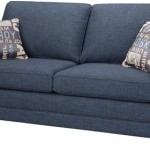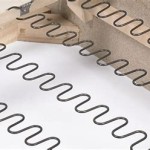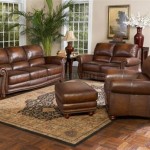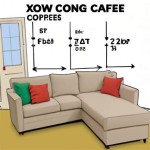Colonial Wingback Sofas
The colonial wingback sofa stands as a testament to enduring design principles and historical influences. Its distinctive silhouette, characterized by high, flared "wings" flanking the back and a traditionally high seat back, speaks to both comfort and a specific aesthetic lineage. Understanding the origins and evolution of this iconic piece allows for a greater appreciation of its continued presence in contemporary interior design.
The wingback chair, the predecessor to the sofa, emerged in 17th-century England. Fireplaces served as the primary source of heat, and the wings incorporated into the chair's design provided protection from drafts and radiated warmth towards the seated individual. These early wingback chairs were often generously proportioned and heavily upholstered, contributing to their sense of opulence and comfort. The development of the wingback sofa followed naturally, offering the same advantages of warmth and comfort but with increased seating capacity.
The colonial period, specifically within the context of American furniture, saw the adaptation and evolution of European furniture styles. English furniture design heavily influenced colonial artisans, who replicated and reinterpreted these forms using locally available materials. Wingback chairs and sofas became popular among the affluent colonists, symbolizing status and refined taste. These early American versions often featured robust construction, reflecting the practical nature of colonial life, while still retaining the elegant lines of their European counterparts.
Characteristic features of colonial wingback sofas often include exposed wooden legs, typically crafted from mahogany, cherry, or walnut. These legs often exhibit distinct turnings or carvings, reflective of the period's decorative styles. Upholstery choices vary, but historically, durable and richly textured fabrics such as damask, velvet, or brocade were common. Nailhead trim, often brass or dark metal, serves both a functional and decorative purpose, securing the upholstery and adding a refined detail.
Distinguishing a truly colonial-style wingback sofa from later interpretations requires careful consideration of several factors. The overall proportions tend to be more generous and stately than later, more streamlined versions. The wings are typically high and flared, often extending slightly forward. The seat back is characteristically high and straight, providing ample support. Finally, the overall construction favors solidity and durability, a hallmark of colonial craftsmanship.
Throughout the 18th and 19th centuries, the wingback sofa remained a popular furniture form, adapting to evolving aesthetic trends. The Queen Anne and Chippendale periods saw more ornate interpretations, with cabriole legs, intricate carvings, and elaborate upholstery. The Federal and American Empire styles brought a neoclassical influence, with simpler lines and more restrained ornamentation. These stylistic shifts demonstrate the adaptability of the wingback form while retaining its core characteristics.
In contemporary interior design, the colonial wingback sofa maintains its appeal, offering a blend of classic elegance and timeless comfort. Reproductions of antique pieces remain popular, particularly among those seeking to create a historically inspired interior. Modern interpretations of the wingback sofa often incorporate updated materials and color palettes while retaining the iconic silhouette. These updated versions can seamlessly integrate into a variety of design schemes, from traditional to transitional to even more contemporary settings.
The versatility of the colonial wingback sofa lies in its ability to function as a statement piece while also providing practical seating. Its high back and wings create a sense of enclosure and intimacy, making it a perfect choice for a reading nook or a formal living room. The scale and presence of the sofa command attention, anchoring a room and providing a focal point for the overall design.
Selecting a colonial wingback sofa requires careful consideration of the existing décor and the desired aesthetic. Factors such as size, upholstery fabric, and leg style all contribute to the overall look and feel of the piece. Whether seeking a historically accurate reproduction or a modern interpretation, understanding the historical context and design elements of the colonial wingback sofa is essential for making an informed choice.
The enduring legacy of the colonial wingback sofa lies in its ability to transcend fleeting trends and remain a relevant and desirable piece of furniture. Its combination of comfort, functionality, and timeless elegance ensures its continued presence in homes and interiors for generations to come.

Wingback Sofa In 2024 Upholstered Furniture Country Sofas

Irvins Tinware Wingback Sofa

Irvins Tinware Classic Wingback Chair

Heritage Sofa Irvin S Country Tinware Home Decor Couches Primitive Decorating

Wingback Settee Timeless Furniture Primitive Living Room Country

Colonial Wingback Sofa Simple Style 18th Century Chair Upholstery Pint

Irvins Tinware Grandmother S Wingback Chair

Rolled Arm Wingback Chair In Country Fabrics Sofas Colonial Furniture Metal Patio Chairs

Classic Wingback Chair Rustic Furniture

Irvins Tinware Reclining Classic Wingback Chair








